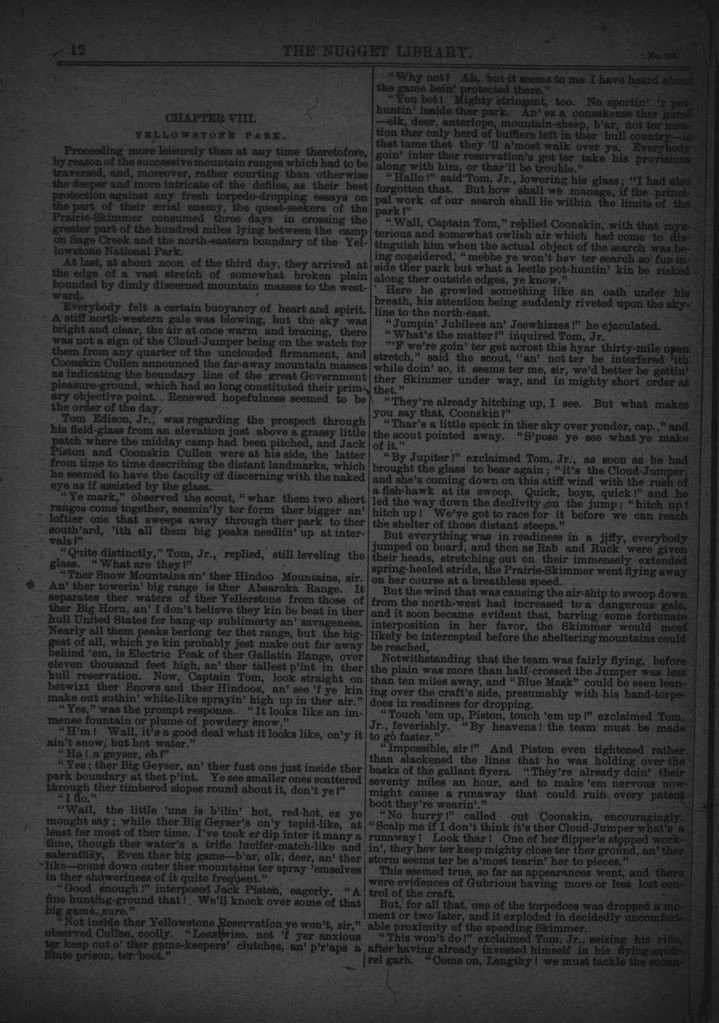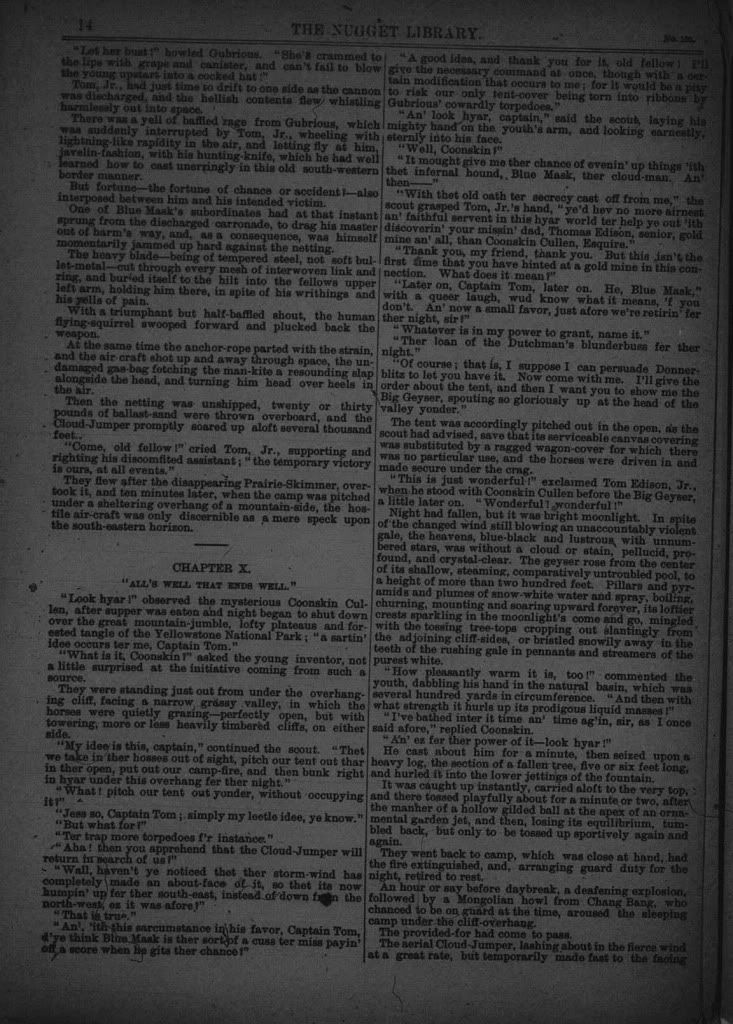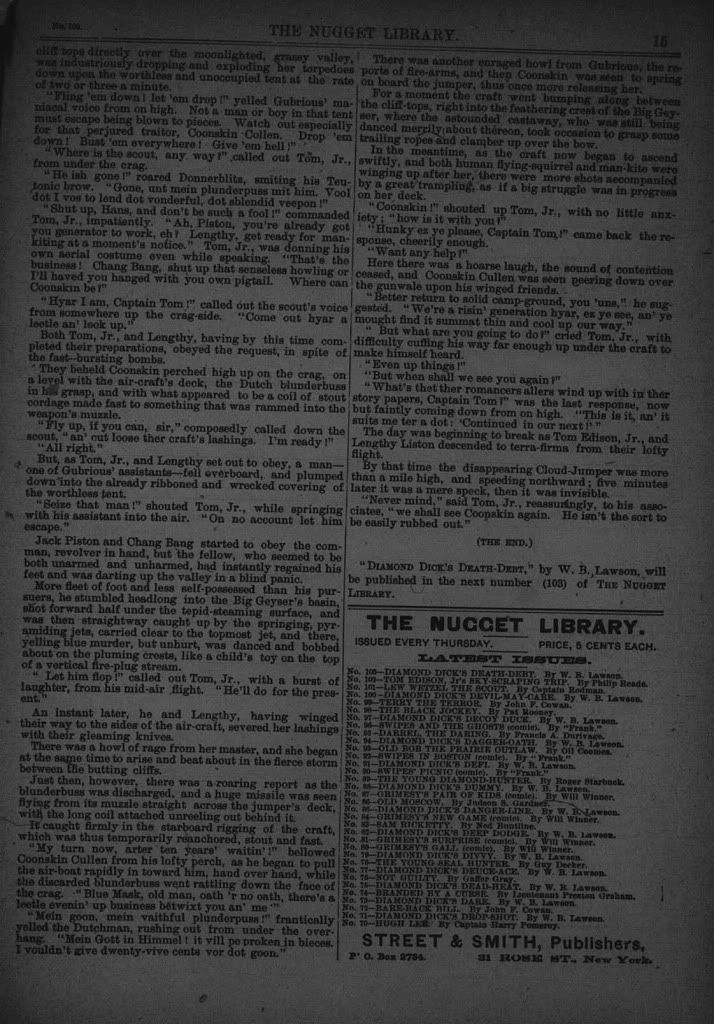While revising my Master's Thesis for publication, I wrote a short bit about a rather small genre of fiction that appeared in the story papers of the late nineteenth century, that of the "Edisonade." The term popularized by John Clute in the pages of his
Encyclopedia of Science Fiction, these stories were boy-adventure tales. Unlike the "up by your own bootstraps" tales written by the likes of Horatio Alger, Jr., these stories featured a young boy who is either a relative of famed inventor Thomas Alva Edison, or someone claiming him as a namesake. The boy inventor often devises some mechanical creation in order to thwart an enemy, villains that ranged from "yellow peril" Fu-Manchu prototypes, to pirates, to international criminal masterminds.
I have posted scans of issue 102 of the late nineteenth century story paper
The Nugget Library, and its feature story "Tom Edison, Jr.'s Sky-Scraping Trip," by Philip Reade from 1891. I find such works important because they are truly the precursors to every sort of working-class literature to have followed, from pulp magazines to comic books, and more. Such works do not usually involve the most convoluted plots, and are not prime examples of political correctness. Many of the dime novel and story paper stories, such as the following, feature racial stereotypes not tolerated today; be warned, this particular issue contains stereotypes of Chinese characters, among others. However, it is my view that these should be taken for what they are, products of their time, and any attempts to place twenty-first century values on nineteenth century works is not the proper avenue in which to pursue historical inquiries. It is unfortunate, but it is what it is and it is still a part of our history, for better or for worse.
I believe I will write some more on the history of such ephemera; however, for the meantime, I submit these pages. They are digital scans of microfilm reels available at the Library of Congress in Washington, D.C. A search of their online catalog will present them, and the staff of the Microform Reading Rooms (1st Floor, The Jefferson Building) are always helpful and a pleasure to deal with. I can not say the same for other rooms, but the Microfilm department has always been superb to work with.
www.loc.gov - Library of Congress Main Site
http://www.loc.gov/rr/microform/ - Library of Congress Microform Reading Rooms Site
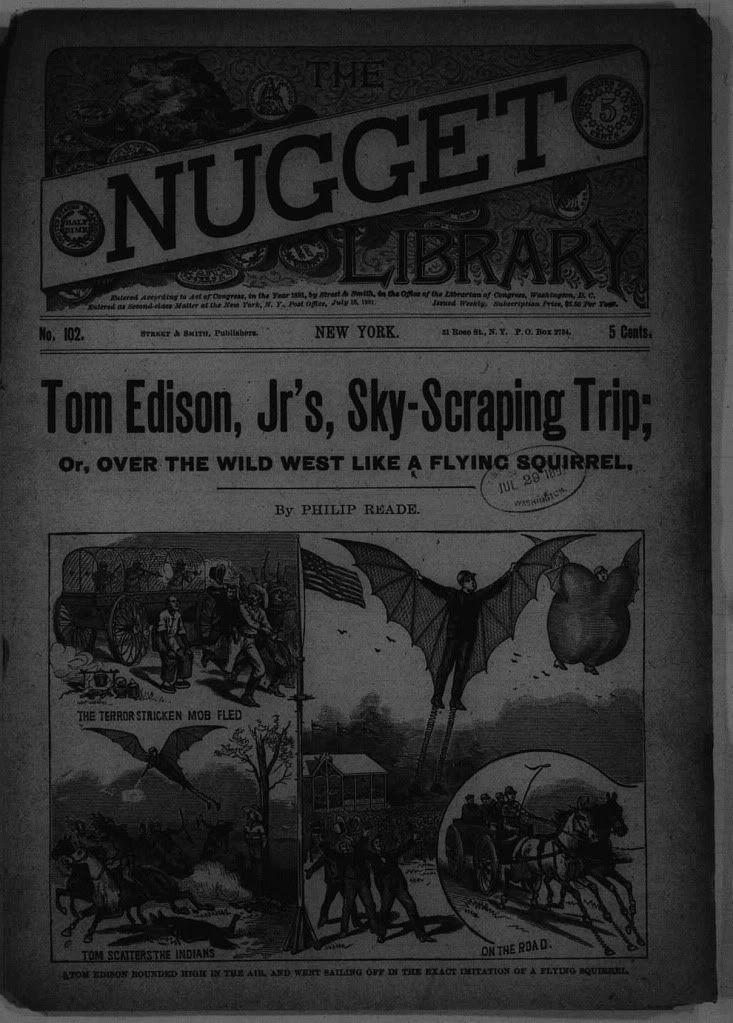
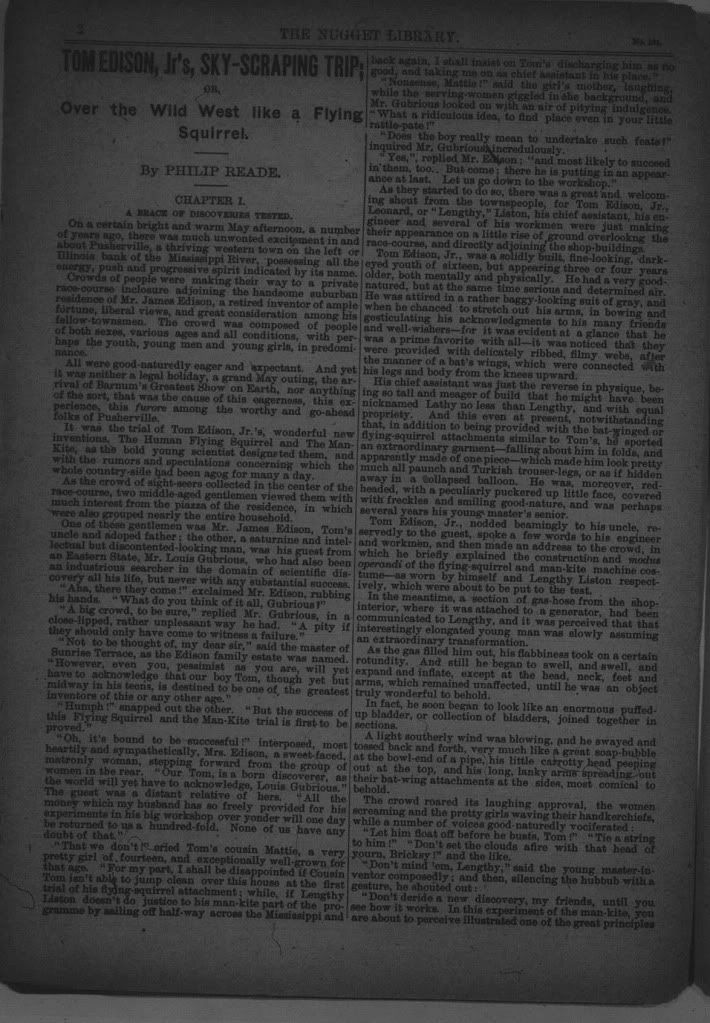
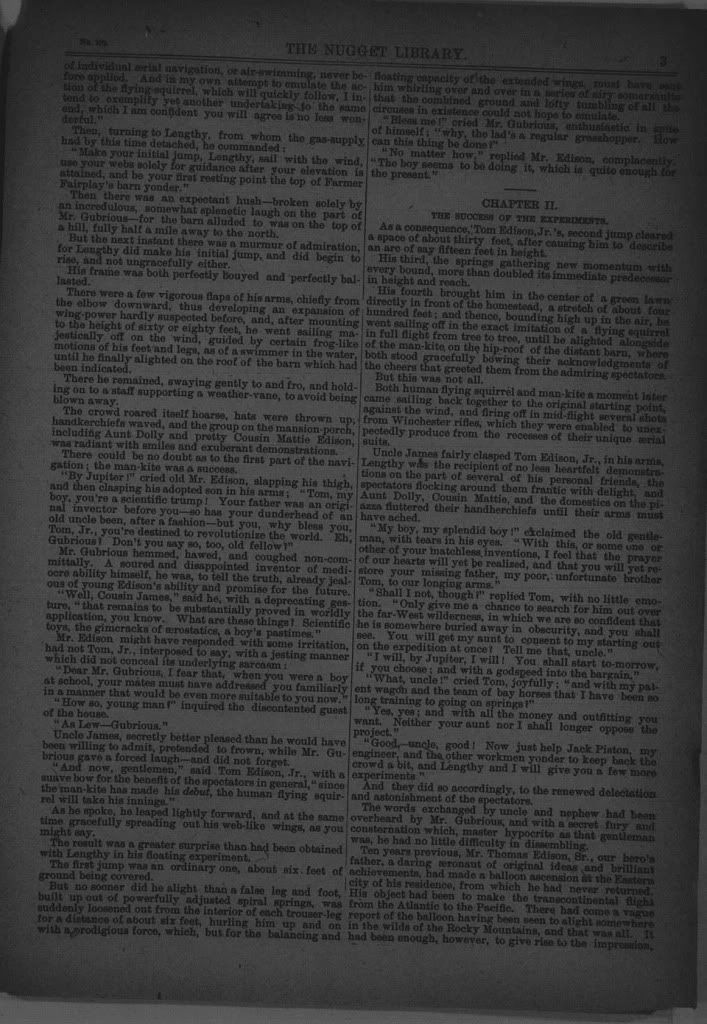
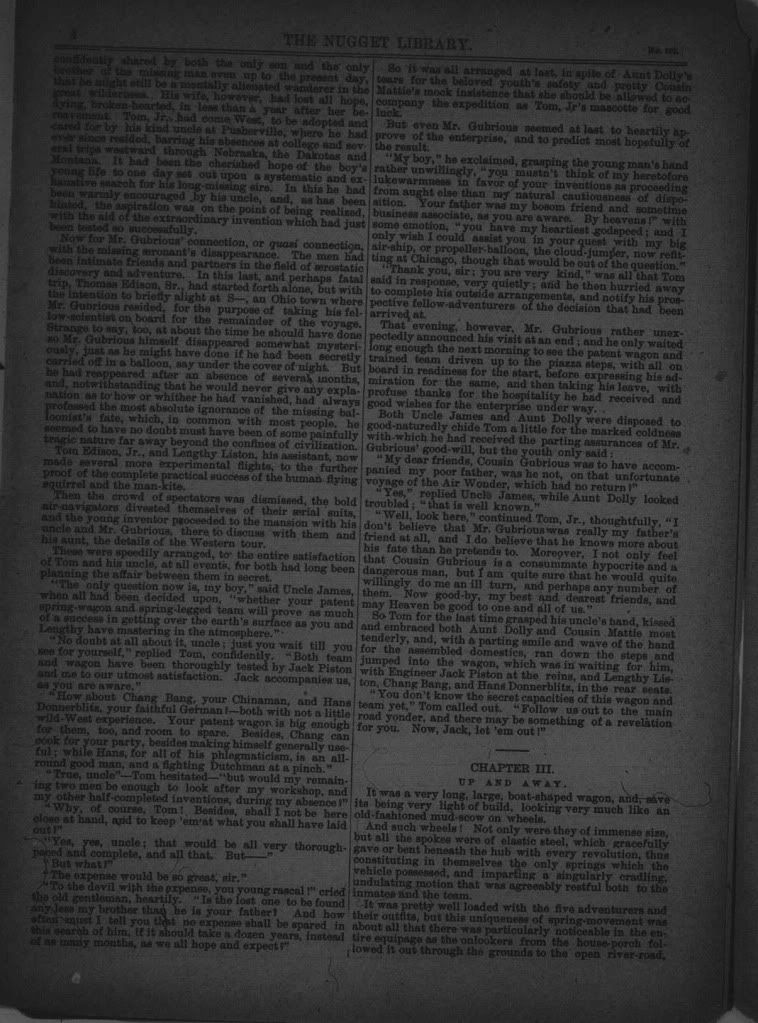
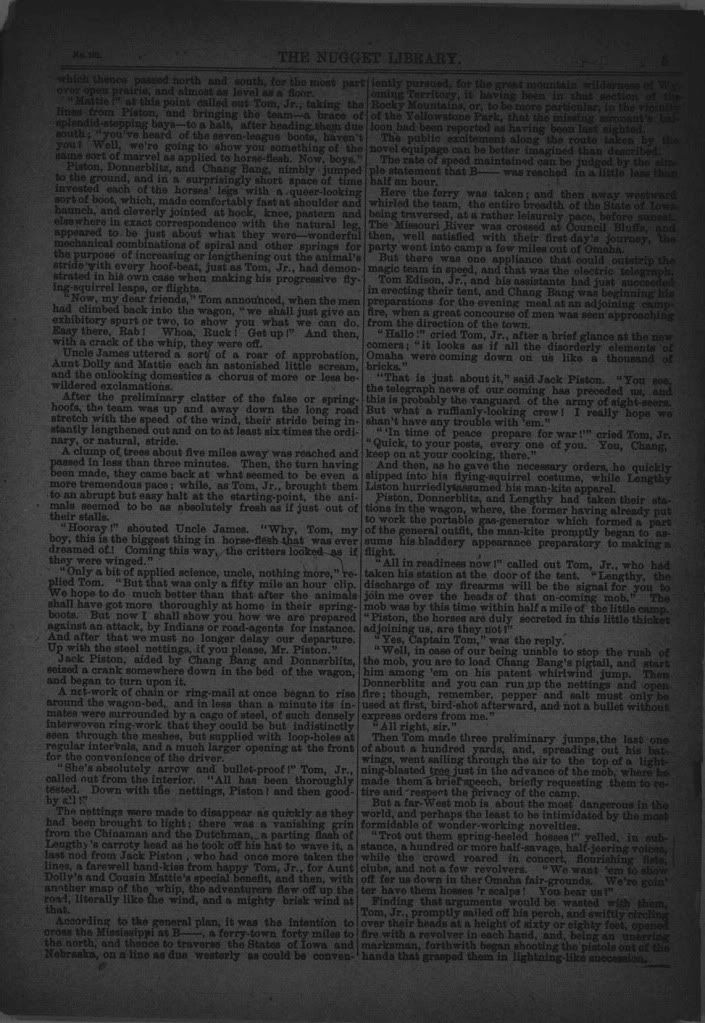
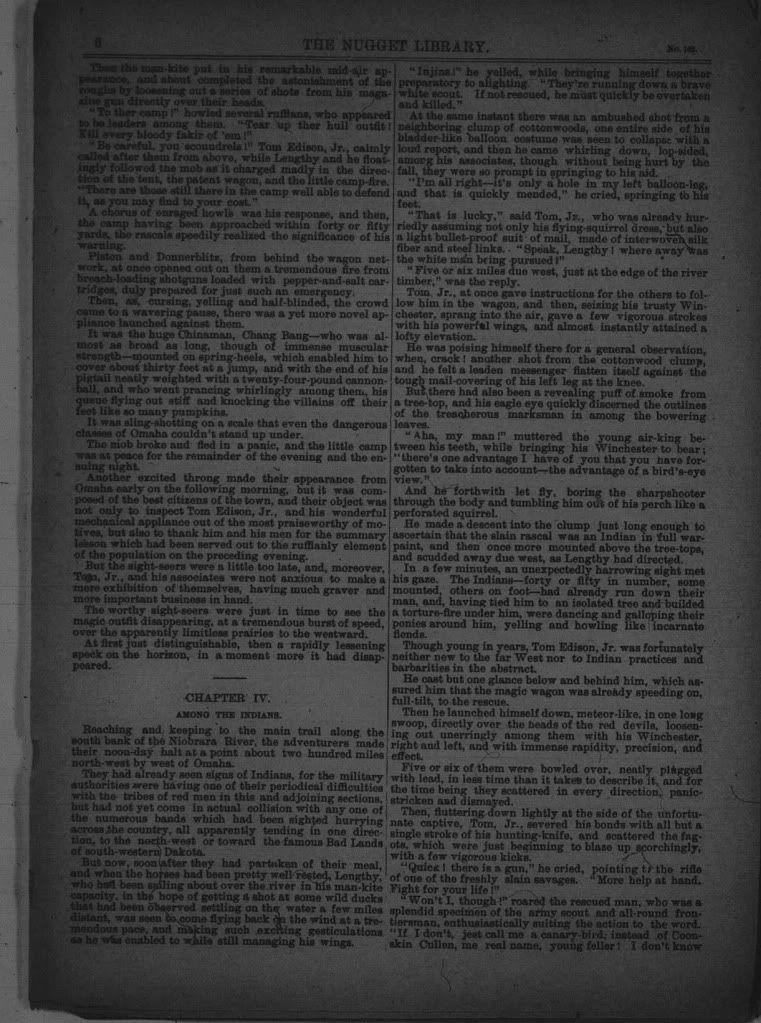
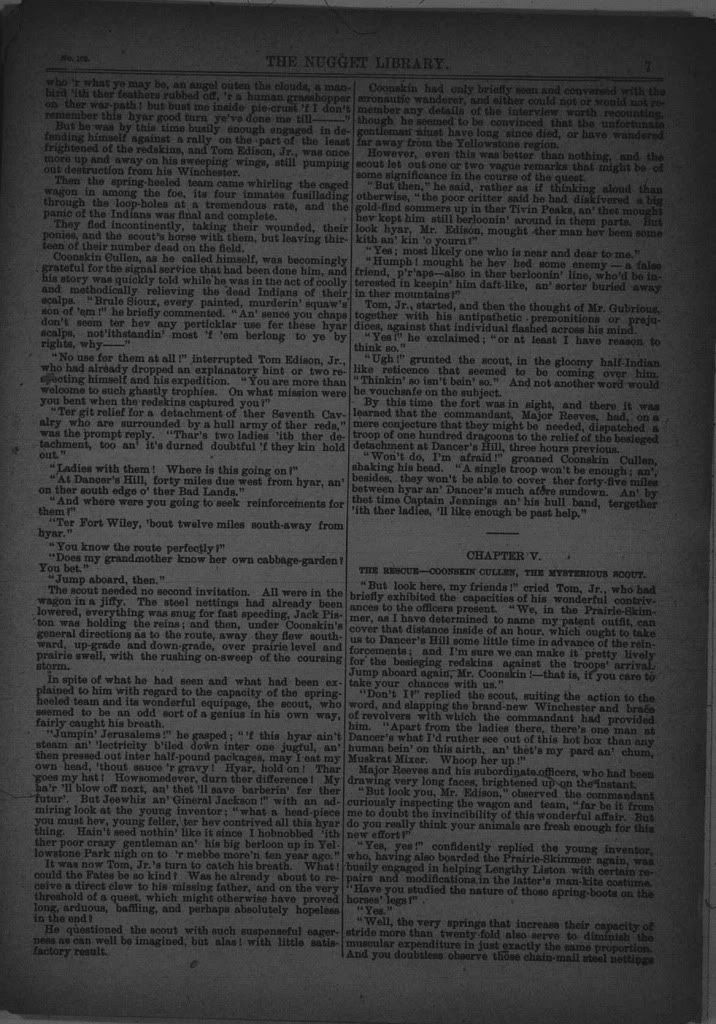

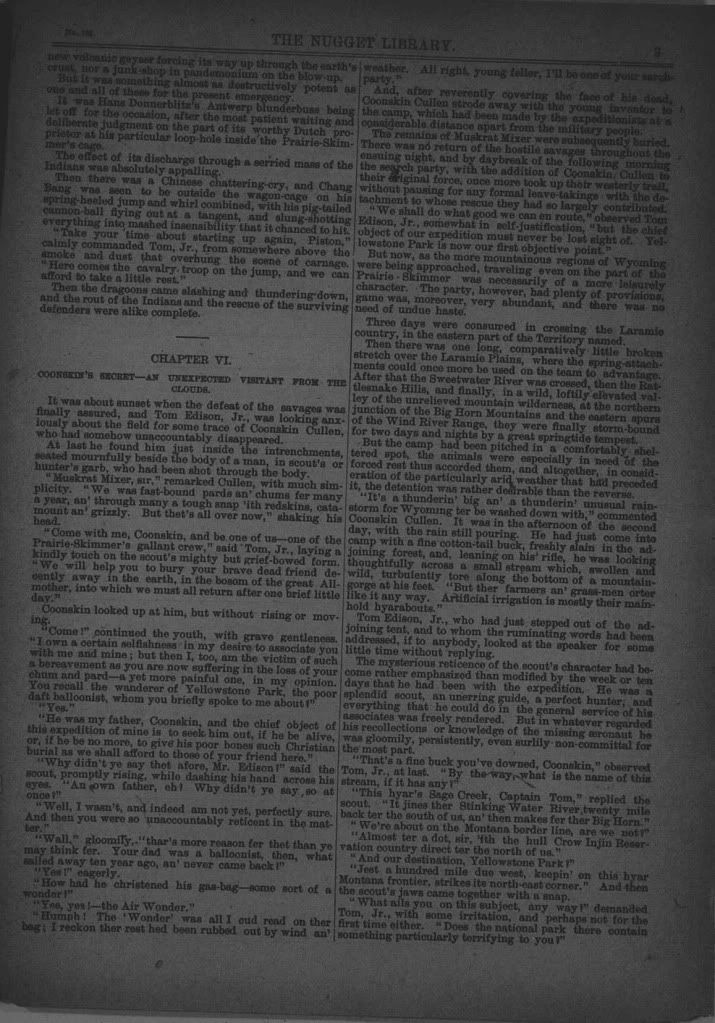
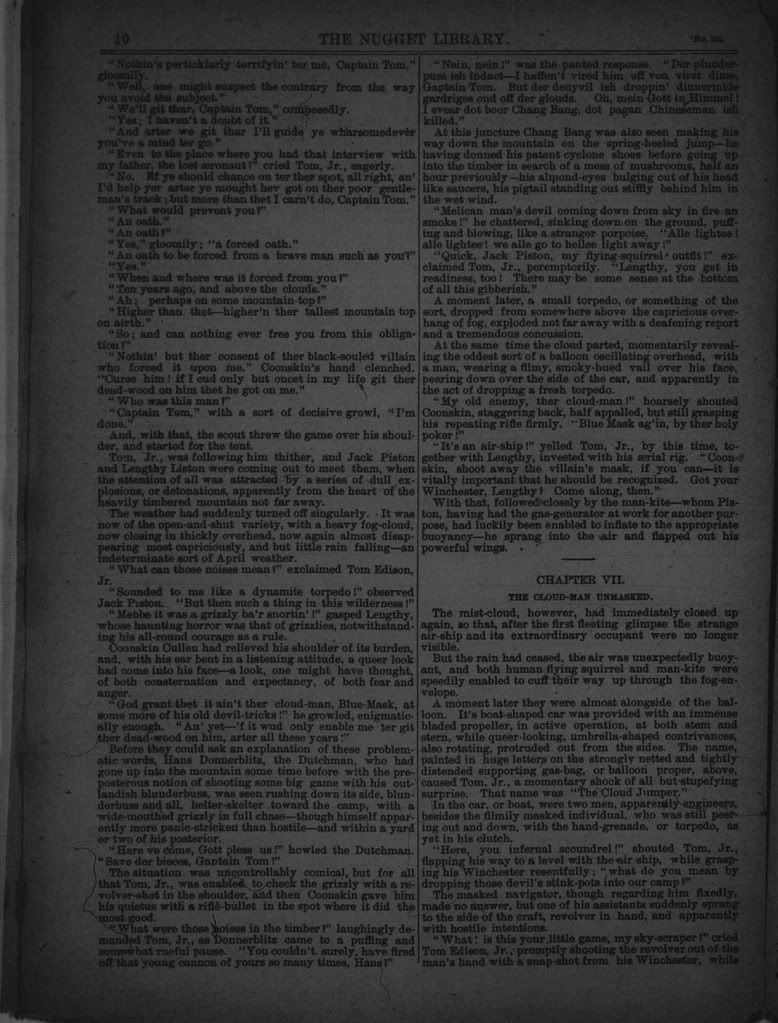
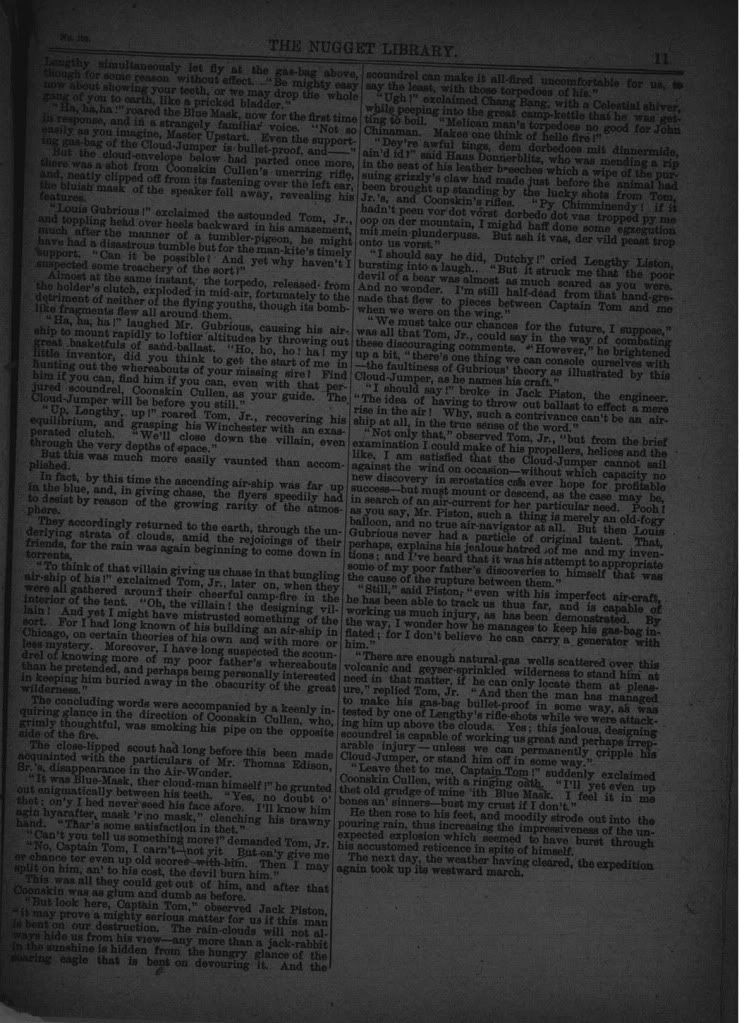
To Be Concluded
